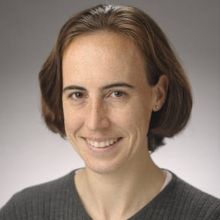
Ann Marie Cody is a professional astronomer with a Ph.D. from the California Institute of Technology. Currently a Principal Investigator with the SETI Institute's Carl Sagan Center, she has also worked at NASA Ames as part of the Postdoctoral Program and the Kepler/K2 Missions.
Dr. Cody uses ground-based telescopes and space observatories to explore the diversity of variability behavior among stars. She has used this variability to learn about the dynamics of gas and dust associated with newborn stars and their planet-forming disks. More recently, her work has turned toward the search for extraterrestrial intelligence. She is currently conducting a research program to look for signs of artificial structures in orbit around millions of stars observed with NASA's Transiting Exoplanet Survey Satellite.
In her spare time, Dr. Cody enjoys creating scientific cartoons to illustrate topics in astronomical research.

Noah Franz is a junior physics and data science major at Siena College, a small liberal arts institution in upstate New York. This past summer, Noah was an intern at Berkeley SETI. Under the supervision of Steve Croft, he performed a radio technosignature search using the Green Bank Telescope (GBT) in West Virginia. In his technosignature search, Noah focused on radio signals coming from exoplanets in transit during their GBT observation. While Noah did not find any evidence of extraterrestrial life in his search, he discovered a new appreciation for SETI searches and is interested in the many different techniques being applied today. In the future, Noah plans to attend graduate school for astrophysics.
This SETI Talks will be online only and will not be live streamed on social media, please make sure to register for access to this event.
